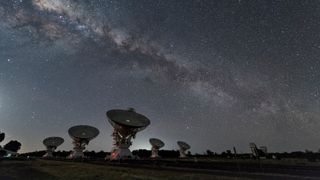In the 19th century, North American settlers pushed the American Frontier westward by forming collaborative caravans, which provided safety and mutual support during their journeys, ultimately allowing them to collectively reap the benefits of the American West. In more recent decades, pioneering countries have begun to push again into the so-called “final frontier” – outer space.
The United States is dedicated to cross the ‘Space Frontier’ and it would be in Australia’s national security interests to strengthen its collaborations with US space institutions. The best strategy for Australia moving forward would be opening additional satellite tracking stations and increasing investment into their existing infrastructure.
Australia has been partnering with the United States on space ventures since 1957, predominantly through satellite tracking assistance. Satellite tracking capabilities are crucial for the navigation and location of both terrestrial and space assets. Australia has hosted the largest number of NASA tracking stations outside the US, assisted the 1969 Apollo 11 moon landing mission and, as of 2019, pledged its support to help send astronauts back to the moon by 2024.
As the US’ magnitude of space activity will inevitably increase in the near future, the need for pin-point tracking will be invaluable – and Australia can provide that service if it acts now.
Australia should be looking towards exploring the ‘caravan’ model in order to benefit from the same sense of security that American settlers did two centuries ago. Strengthened collaboration with the US would allow Australia to reap three key benefits: it would enable Australia to contain foreign threats, modernise its military capabilities and protect its space assets.
As Royal Australian Air Force (RAAF) Chief Air Marshal Leo Davies publicly stated, outer space is “one of those domains that needs to expand” and Australia has only “begun modestly,” already falling behind other countries.
Australia needs to identify its long-term threats
Further collaboration with the US would allow Australia to help preserve the liberal international order in its region. In a 2018 United States congressional hearing, USAF General John Raymond, commander of the US Space Command, highlighted China and Russia’s developing space capabilities as a national security threat. Specifically, General Raymond pointed to reversible jamming capabilities that “could disrupt global positioning and communications systems,” and China’s ability to “destroy satellites” demonstrated by shooting down its own. By collaborating with allies like the United States through the provision of crucial tracking, Australia can help ensure that neither China nor Russia gains too much influence in the milieu of outer space and, as a result, the global sphere of influence on Earth.
The United States has established itself as one of several nations willing to push the boundaries of the ‘Space Frontier’. Australia would help to shore up its national security if it strengthened its existing collaboration with the US in space ventures.
The militarisation of space won’t wait for Australia
Intensified collaboration with the US would allow Australia to develop its military capabilities through information-sharing and plugging into the United States’ experience in adapting to new milieus of warfare.
Offering Australia’s sophisticated satellite tracking assistance to future US Space Command projects would be the best course of action to strengthen ties between the two countries’ space programs. Learning from the framework of their US counterparts would allow Australia to gradually develop the Australian Space Agency and the space branch of the RAAF, while immediately benefitting from the US’ military influence and protection.
Australia’s assets in space are vulnerable
Stronger collaboration with the US would also allow Australia to better protect its existing and future space assets, particularly satellites, from cyberattacks. Satellites play an invaluable role in the functioning of modern militaries and economies such as Australia’s, providing intelligence, scientific research and data transmission, among other vital uses.
The ability to protect satellites will prove crucial to the future of Australia’s national security. For example, in 2016, Austrade and the Australian Department of Defence were victims of cyber infiltration through the hacking of privately-owned Australian satellites by groups that appeared to be based in China.
Former CIA Director and head of the US National Security Agency, Michael Hayden identified the alleged Chinese efforts to hack into Australian databases (which intelligence suggests were state-sponsored) as attempts to steal information for commercial and political benefit.
By offering satellite tracking assistance to the US, the RAAF can learn from the US Air Force’s (USAF) cybersecurity capabilities and expertise on the best ways to protect the eighteen space assets Australia currently has in orbit, and the hundreds more it hopes to deploy.
A greater partnership would allow Australia to contain foreign threats, develop its modern militarily capabilities and protect its space assets. By increasing the amount of its operational tracking stations and investing in its already existing infrastructure, Australia can ensure an ongoing functional partnership, become the US’ primary partner on space forces and reap the national security benefits provided by the virtual ‘spacecraft caravan.’






